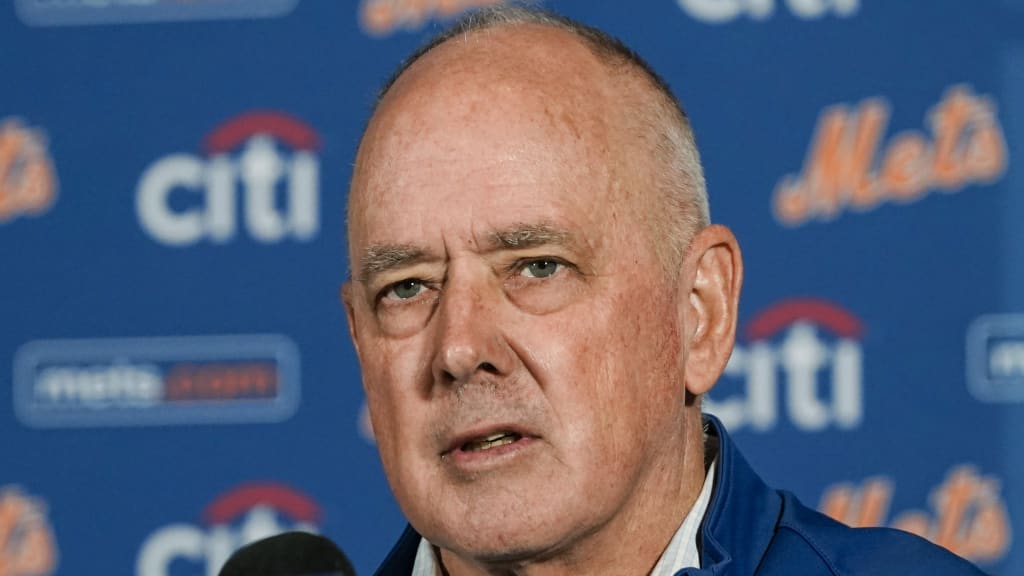
NEW YORK -- Another disappointing summer has given way to another busy offseason for the Mets, who have seen significant front-office and clubhouse turnover in the past five years. That trend will continue for a team in need of a new top baseball operations executive, a new manager and plenty of new players.
How will it all shake out? Here¡¯s a look at the five most important questions facing the Mets this offseason:
1. What will the new organizational structure look like?
Consider this an all-encompassing question regarding the many decisions the Mets must make over the next two months. First, the team must hire a president of baseball operations. Once the new executive is on board, that person will have the power to dictate everything else to come.
One exception is the fate of general manager Zack Scott, which team president Sandy Alderson could decide before making a baseball operations hire. The Mets intend to address Scott¡¯s future only after his litigation regarding a DUI charge is complete in December.
The rest is up to the incoming president of baseball ops. Outside of Steve Cohen¡¯s purchase of the team last November, the Mets¡¯ next hire could be the organization¡¯s most impactful move in decades. Cohen and Alderson will take their time to do it right, knowing that only by answering this question can they effectively answer the rest.
2. Whom will the Mets hire as manager?
While this will depend directly upon whom the Mets name as president of baseball ops, it¡¯s nonetheless an important question. New York is about to hire its fifth manager over a five-year stretch and is in desperate need of some continuity.
Most likely, the new manager will have prior connections to the president of baseball ops, though the Mets could take another look at past candidates with Mets ties, such as Carlos Beltr¨¢n or Joe McEwing.
3. To whom will the Mets extend qualifying offers (and will those players accept?)
The Mets are near-certain to dangle a one-year qualifying offer in front of outfielder Michael Conforto, who is likewise near-certain to reject it. The offer, which will be worth around $20 million, represents a fraction of what Conforto will seek in free agency. That doesn¡¯t mean the longtime Met is out the door; it simply means he¡¯s about to enter the open market for the first time in his career. With a qualifying offer attached to him, Conforto still stands a decent chance of returning to New York -- the only club that could sign him without ceding draft-pick compensation.
Murkier is the future of starting pitcher Noah Syndergaard, who is less certain -- but still somewhat likely -- to receive a qualifying offer. Unlike Conforto, Syndergaard has significant incentive to accept it as a vehicle to rebuild his value post-Tommy John surgery. Doing so would allow Syndergaard to become a free agent next offseason at age 30.
Two other prominent free agents are ineligible for a qualifying offer -- starter Marcus Stroman, because he already received one last year, and second baseman Javier B¨¢ez, because he was traded during the season. They will hit the open market in November.
4. How much pitching depth must the Mets acquire?
Potentially lots. Consider the state of the Mets¡¯ rotation: Jacob deGrom missed the entire second half of the season due to elbow woes; Carlos Carrasco sat out four months due to a hamstring strain; David Peterson lost three months to a broken foot; Syndergaard (if he returns) has thrown two innings in two years; Taijuan Walker and Tylor Megill will be coming off massive innings jumps; Stroman is a free agent with plans to test the market; and so on and so forth.
Simply put: every single Mets starter has a significant question mark attached to him. So how will the front office proceed? There¡¯s room to guarantee at least one free agent a rotation spot, and possibly more. Will the Mets shop at the deep end of the market, targeting proven starters like Robbie Ray or Kevin Gausman? Or will they choose a more patchwork approach, relying on significant rebounds from deGrom and Carrasco?
5. How much of the offensive core will remain?
Since 2019, the Mets have considered their offensive core of Conforto, Pete Alonso, Brandon Nimmo, Dominic Smith, Jeff McNeil and J.D. Davis talented enough to carry them to perennial postseasons. It simply hasn¡¯t happened, leaving some to wonder if this core -- now growing expensive through arbitration -- is the right one for New York.
Alonso and Nimmo are near-locks to return, but outside of those two, this group could see significant change. Would the Mets trade a player like Davis or McNeil, seeking a fresh start? Would they sell low on Smith or relegate him to the bench? These will be subplots worth watching as the 2022 roster takes shape.

